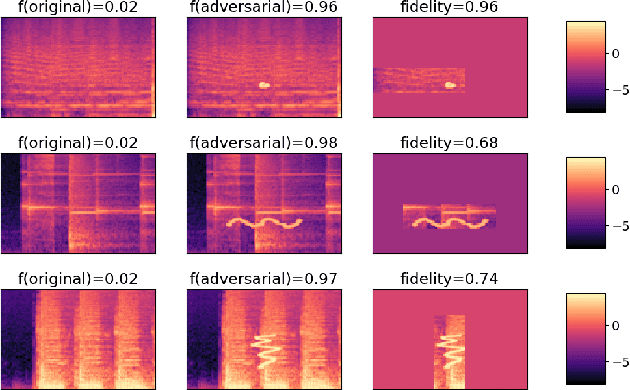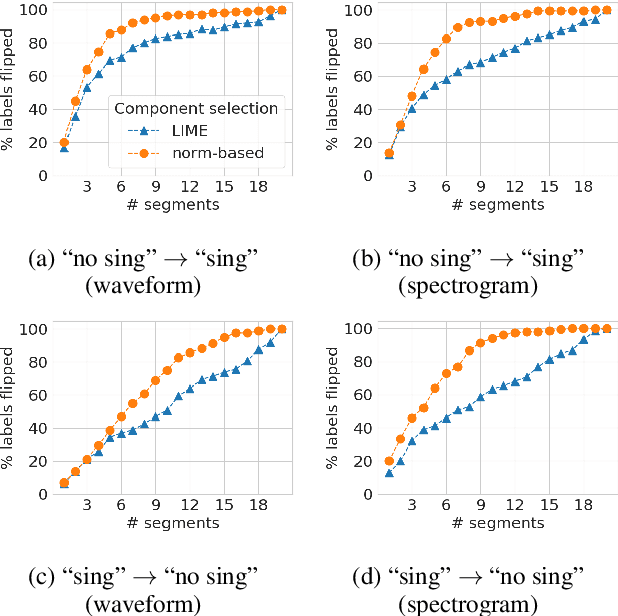Katharina Prinz
Johannes Kepler University Linz
On the Veracity of Local, Model-agnostic Explanations in Audio Classification: Targeted Investigations with Adversarial Examples
Jul 19, 2021



Abstract:Local explanation methods such as LIME have become popular in MIR as tools for generating post-hoc, model-agnostic explanations of a model's classification decisions. The basic idea is to identify a small set of human-understandable features of the classified example that are most influential on the classifier's prediction. These are then presented as an explanation. Evaluation of such explanations in publications often resorts to accepting what matches the expectation of a human without actually being able to verify if what the explanation shows is what really caused the model's prediction. This paper reports on targeted investigations where we try to get more insight into the actual veracity of LIME's explanations in an audio classification task. We deliberately design adversarial examples for the classifier, in a way that gives us knowledge about which parts of the input are potentially responsible for the model's (wrong) prediction. Asking LIME to explain the predictions for these adversaries permits us to study whether local explanations do indeed detect these regions of interest. We also look at whether LIME is more successful in finding perturbations that are more prominent and easily noticeable for a human. Our results suggest that LIME does not necessarily manage to identify the most relevant input features and hence it remains unclear whether explanations are useful or even misleading.
The Impact of Label Noise on a Music Tagger
Aug 14, 2020
Abstract:We explore how much can be learned from noisy labels in audio music tagging. Our experiments show that carefully annotated labels result in highest figures of merit, but even high amounts of noisy labels contain enough information for successful learning. Artificial corruption of curated data allows us to quantize this contribution of noisy labels.
End-to-End Adversarial White Box Attacks on Music Instrument Classification
Jul 29, 2020


Abstract:Small adversarial perturbations of input data are able to drastically change performance of machine learning systems, thereby challenging the validity of such systems. We present the very first end-to-end adversarial attacks on a music instrument classification system allowing to add perturbations directly to audio waveforms instead of spectrograms. Our attacks are able to reduce the accuracy close to a random baseline while at the same time keeping perturbations almost imperceptible and producing misclassifications to any desired instrument.
 Add to Chrome
Add to Chrome Add to Firefox
Add to Firefox Add to Edge
Add to Edge